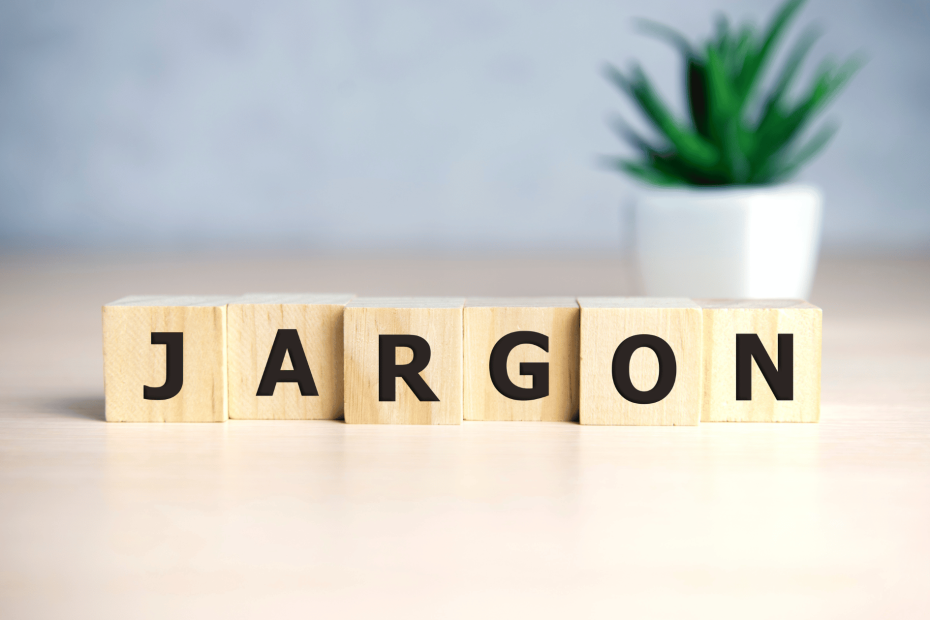In the world of content writing, language is power. Content writers wield a unique set of words and phrases that may sound like gibberish to the uninitiated. From SEO to CTA, it’s easy to get lost in the alphabet soup of jargon. Fear not! In this blog post, I’ve decoded the mystery behind common content writer jargon, making it accessible and understandable for all.
SEO (Search Engine Optimisation)
Definition: SEO is the practice of optimising content to rank higher on search engine results pages (SERPs). It involves using relevant keywords, meta tags, and other techniques to improve visibility.
Example: “I’m working on the SEO for our latest blog post to improve its visibility on Google.”
Why It Matters: Understanding SEO is crucial for getting your content seen by a wider audience. By optimising your content, you increase the chances of it appearing on the first page of search engine results.
CTA (Call to Action)
Definition: A CTA is a prompt or suggestion that encourages readers to take a specific action, such as signing up for a newsletter, making a purchase, or clicking a link.
Example: “Don’t forget to include a compelling CTA at the end of your article to drive conversions.”
Why It Matters: CTAs are the bridge between your content and reader engagement. They guide your audience toward the desired action, whether it’s subscribing, sharing, or purchasing your product.
Evergreen Content
Definition: Evergreen content refers to content that remains relevant and valuable over an extended period. It contrasts with time-sensitive or trending topics.
Example: “We should focus on creating evergreen content to maintain a consistent flow of traffic to our website.”
Why It Matters: Evergreen content forms the foundation of a sustainable content strategy. It continues to attract readers and provides long-term value, reducing the need for constant content creation
Bounce Rate
Definition: Bounce rate is the percentage of visitors who navigate away from a website after viewing only one page, indicating that they didn’t engage further with the site.
Example: “Our blog’s high bounce rate indicates that we need to improve our content’s engagement.”
Why It Matters: A high bounce rate can be a red flag, suggesting that your content isn’t resonating with your audience. It’s essential to address this issue to keep visitors on your site and increase their interaction.
Keyword Density
Definition: Keyword density is the ratio of a keyword or key phrase to the total number of words in a piece of content. It’s often expressed as a percentage.
Example: “Keep an eye on keyword density to ensure your content is optimized without overstuffing keywords.”
Why It Matters: Keyword density plays a crucial role in SEO. Striking the right balance ensures that your content ranks well without compromising its readability. Overstuffing keywords can lead to penalties from search engines.
Mastering Content Writer Jargon
In the realm of content writing, jargon serves as a secret code for optimizing and crafting compelling content. By decoding these terms—SEO, CTA, evergreen content, bounce rate, and keyword density—you empower yourself to create content that’s not only engaging but also search engine-friendly.
Remember, clarity and accessibility are paramount in content creation. Don’t hesitate to ask questions or seek further clarification if you encounter unfamiliar terms. The more you understand these content writer jargon words, the more effective you’ll become as a content creator or a reader looking to engage with high-quality content.
Closing Thoughts: Your Questions Matter
I hope this blog post has shed light on some of the commonly used content writer jargon. If you have any questions or would like me to demystify more terms, please feel free to reach out. Your feedback and inquiries help me tailor my content to your needs and interests.
Content writing doesn’t have to be a cryptic language. With the right knowledge and guidance, you can harness the power of these jargon terms to enhance your writing and reach a broader audience. Happy writing!
Related Blogs:
Content Writing Made Easy: How to Find a Writer Who Understands Your Business
8 Essential Tips to Create Engaging Blog Posts for Your Business
